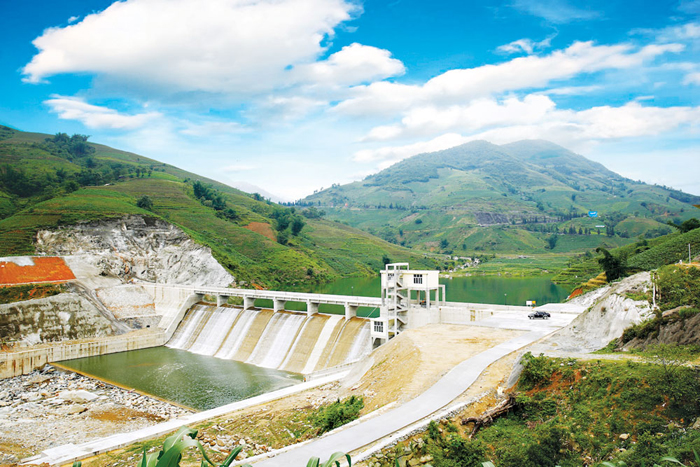The potential is nearly 4,000 MW
Mr. Tran Viet Ngai, Chairman of the Vietnam Energy Association, said that fossil fuels such as coal and gas are becoming increasingly exhausted and nuclear power has been halted. To secure the socio - economic development, by 2020, the power sector needs to add nearly 100 billion kWh of electricity, and by 2030, this figure will be 300 billion kWh.
As said by Mr. Ngai, the total capacity of the current hydropower sources is about 18,000 MW with an output of about 70 billion kWh per year. Large hydropower sources have been fully exploited. According to the Ministry of Industry and Trade, 824 hydropower projects have been included in the master plan. Of which, 343 projects (with a total capacity of 17,987 MW) have been exploited; 165 projects are under construction (with a total capacity of 3,348 MW); 260 projects are being studied (with a total capacity of 3,050 MW); the remaining 56 projects have not had investment policies yet.
"Based on calculations, if small and medium hydropower projects are exploited as mentioned above, the total capacity will reach nearly 4,000 MW, supplying about 15 billion kWh per year, adding helping cover the power shortage," – said Mr. Ngai.
Advantages and disadvantages
Mr. Phan Duy Phu – A hydropower specialist (Ministry of Industry and Trade) said that the development of small and medium hydropower plants has outstanding advantages:
- Slowing down, controlling floods and contributing to the improvement of landscapes and ecological environment;
- Supplying water for production and daily life of the people in the dry season, not depleting the natural resources and not changing flows after water runs through turbines.
- Contributing to the state budget through VAT, forest service fees, water resource tax, corporate income tax, etc. to help create an impetus for industrial development in localities.
However, due to the massive construction of small and medium hydropower plants during the period 2010 - 2014, many shortcomings have been seen:
- Some projects of private investors have affected the forest environment, flood discharges are not in accordance with the regulated procedures;
- There has not been a comprehensive study on hydropower potential exploitation and many inconsistencies exist in quality management of many stages such as inadequate geological survey, designs not complying with technical codes and standards, unsafe construction process, etc. leading to unpredictable incidents.

Coc San 29.7 MW Hydropower Plant (Lao Cai Province) with a total investment cost of USD 49.9 million
Which direction?
Sharing the opinion that it is necessary to make full use of medium and small hydropower sources, Mr. Phan Duy Phu stated that the coordination among ministries, agencies and local authorities should be strengthened, such stages as master plan, construction, operation and exploitation of hydropower projects should be well managed and performed with the aim of sustainably developing hydropower sources on the basis of harmonizing between the national energy security requirement and the water supply for daily life and agricultural production, between economic development requirement and environmental protection.
At the same time, small and medium hydropower plants must strictly obey legal regulations on dam safety, environmental protection, project quality assurance and control from designing, construction supervision, reservoir operation procedures; compensation, resettlement, afforestation and forest environmental service fee payment.